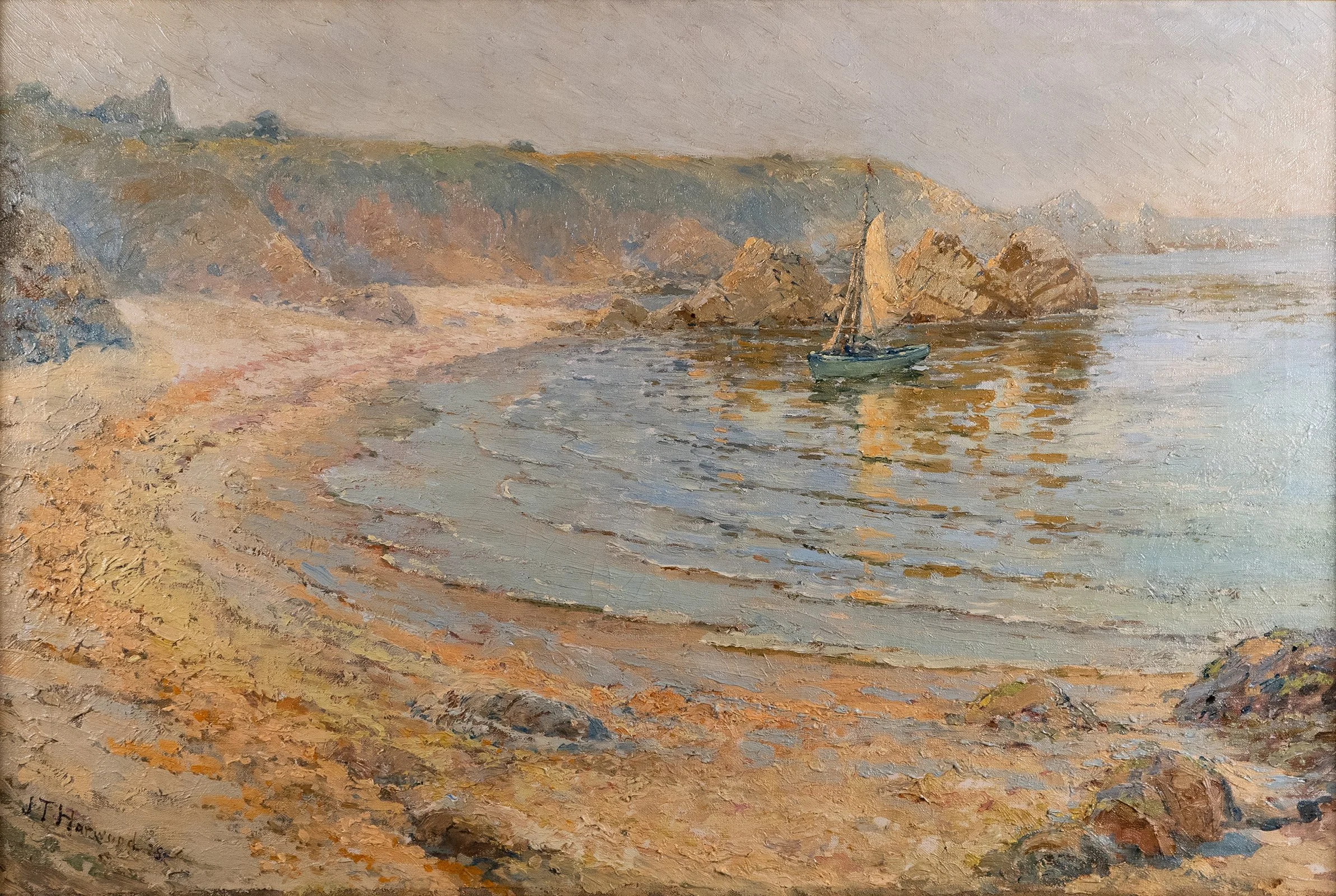
James Taylor Harwood
(1860–1940)
James Taylor Harwood (1860–1940): A Pioneer of Utah Art
James Taylor Harwood was a pivotal figure in Utah's artistic development and one of the state's earliest painters to receive formal training in Europe. His work, influenced by academic realism and impressionism, established a foundation for the professionalization of art in Utah and the American West.
Early Life and Education
Born on April 8, 1860, in Lehi, Utah, James Taylor Harwood showed an early aptitude for art. His family later moved to Salt Lake City, where he received his first artistic instruction from Utah artist Dan Weggeland. Encouraged by his teachers and mentors, Harwood pursued further education at the San Francisco School of Design.
Seeking to refine his craft, Harwood traveled to Paris in 1888 to study at the prestigious Académie Julian, where he trained under notable French artists such as Jules Lefebvre and Benjamin Constant. His time in France exposed him to the academic painting traditions of the 19th century, and he absorbed influences from the Impressionist movement, which shaped his evolving style.
Artistic Career and Influence
Harwood became the first Utah artist to exhibit at the Paris Salon, an achievement that elevated his reputation both in Europe and back home. After nearly a decade in France, he returned to Utah, bringing with him a refined artistic sensibility that would influence generations of artists.
In Utah, Harwood established himself as a leading figure in the local art scene, teaching at the University of Utah and helping to shape the next generation of regional painters. His work included landscapes, portraits, and genre scenes, often depicting the people and landscapes of Utah with a sophisticated European technique.
His paintings often captured the interplay of light and atmosphere, blending realism with impressionistic touches. Notable works include The Loiterers, The Old Mill, and his evocative landscapes of the Utah wilderness.
Later Years and Legacy
James Taylor Harwood continued painting and teaching throughout his life, leaving an indelible mark on Utah's art community. He served as the first director of the Utah Art Institute, where he played a crucial role in fostering the professional development of artists in the region.
Harwood passed away in 1940, but his artistic legacy endures. His works are held in major collections, including the Utah Museum of Fine Arts, and his contributions helped establish Utah as a center for artistic excellence in the American West.
Through his dedication to both his craft and his students, Harwood remains a foundational figure in the history of Utah art, bridging the traditions of European academic painting with the emerging modernist movements of the 20th century.






